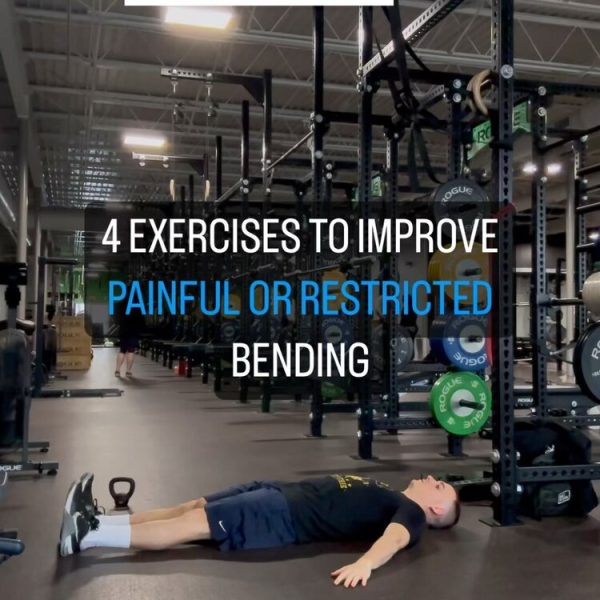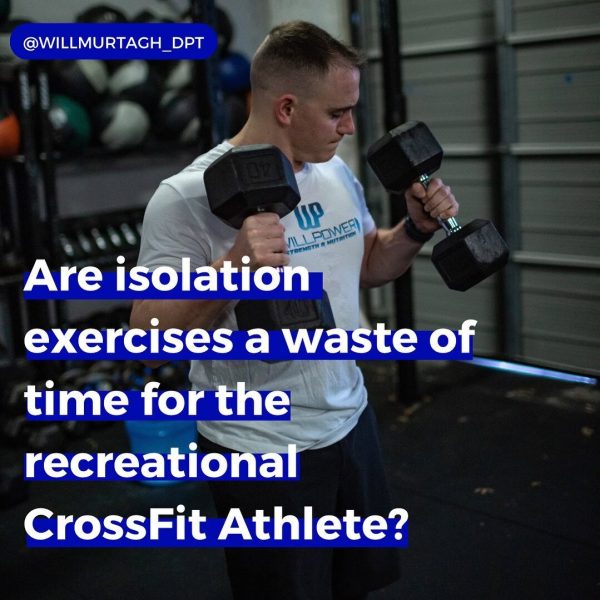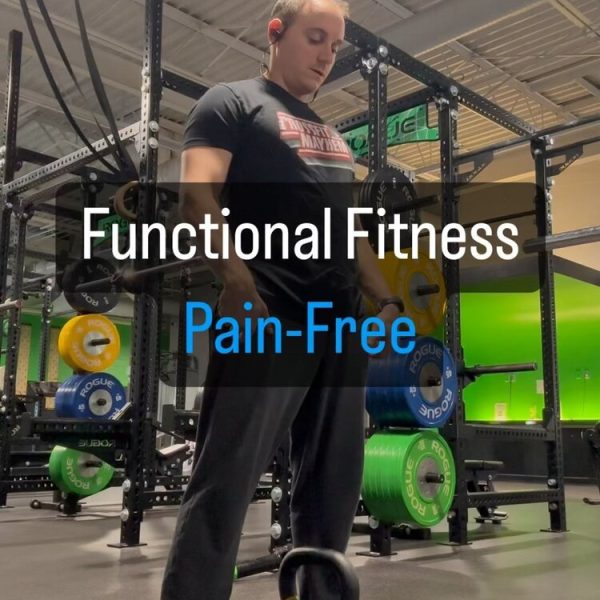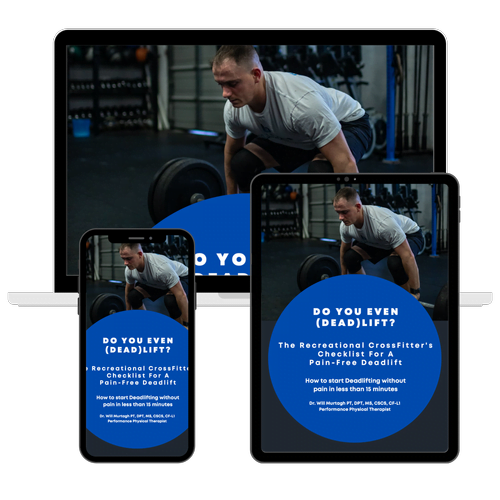Dr. Will Murtagh is a performance physical therapist and writer who helps Fitness Athletes elevate their fitness and train pain-free.
Do you feel your strength levels are below par in your CrossFit workouts? It is common for CrossFitters to feel this way based on where the training methodology came from in its early days.
More often than not, CrossFitters face challenges and limitations when it comes to strength training for CrossFit because of how high the strength levels of CrossFit athletes have risen, the variety of other skills in CrossFit you have to learn, and the impact that improperly dosed metabolic conditioning has, on strength training.
It is frustrating to put in the effort and not see the fruits of your training, either in a lack of progress by hitting a plateau or dealing with nagging injuries.
Fortunately, I have spent the last 10-plus years as a CrossFit coach, Remote Coach, and Performance Physical Therapist. I will reveal the critical components of strength training for CrossFit that have catapulted my strength gains and my client’s strength training to reach new personal records.
We will explore the role strength plays in CrossFit workouts, how to tailor your strength training to your goals, and avoid common pitfalls most CrossFit athletes face.
This article will guide you to optimize your strength training and serve as a reference when designing your training days. It will help you ensure that you are building strength to eventually Rx any workout you encounter and continually build upon your fitness to achieve success in CrossFit.
Whether you aspire to the CrossFit games or to be one of the leading fire breathers in any of your local CrossFit gyms. Let’s dive into the nine critical components of any effective strength training program for CrossFit athletes like you.
Before we begin, if you’re considering professional help with your CrossFit training and want to start building your strength for CrossFit without having to deal with nagging pain or injuries I encourage you to book a free consultation HERE!
What are the key components of strength training for CrossFit?
The best option for any CrossFit strength training program or fitness journey will prioritize you as an individual. Most CrossFitters fall short of their strength gains because the program design needs to account for their specific needs or where they are at in their fitness level, leading to hard workouts but lackluster progress towards their fitness goals.
As you read this article, it’s crucial to understand that your past sport and training endeavors have built a baseline of fitness, and that is where your strength training must begin. It would not make sense to have you training like an advanced CrossFit athlete when your fitness journey has just started and vice versa if you have spent time training and are looking to improve established strength levels.
Below are the nine key components of any strength training program for a CrossFit. Incorporating them into your programming will lay the foundation for continual progression toward maximum physical potential.
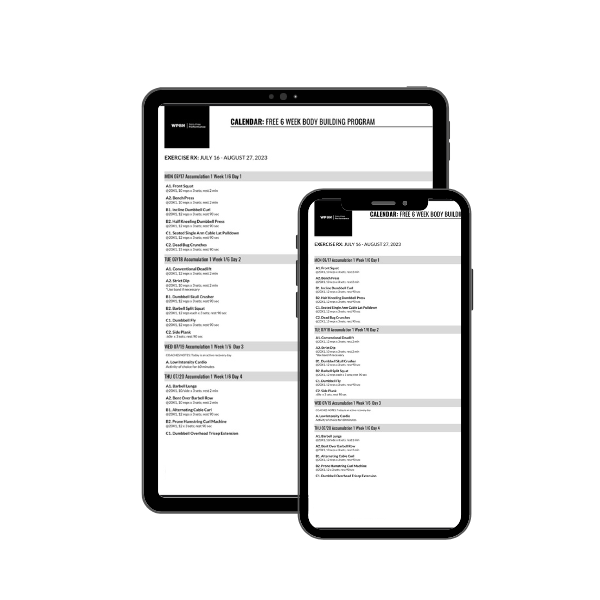
Free 6-Week Body Building For CrossFitters Program
1. Your Fitness Goals
Your actual fitness goals serve as the primary compass for your strength training and dictate what kind of prescription you should follow. Whether your goals are to build your absolute strength levels as high as possible to make the weights in your CrossFit WODs (workout of the day) easier, build muscle mass to look better with your shirt off, or increase the volume of your accessory work to prevent injury identifying your objective is step number one.
Suppose you want to prioritize your maximal strength levels and build your one-rep max. In that case, your strength training prescription will likely involve heavier weights and lower rep ranges. But, if you are targeting hypertrophy work or muscle endurance and weight gain, you may have to opt for high rep and lighter weight prescriptions.
2. Your Biological Age vs Training Age
Acknowledging your biological and training age is the next step toward designing great strength programs for CrossFit. Your biological age represents the years you have been alive. In contrast, your training age is your cumulative time in structured strength training programs.
Unfortunately, many of my new clients protest that they have been working out their entire lives. Still, it’s essential to recognize that someone can be older in years but have a very low training age or current fitness level.
As you progress in your training age, you will move from novice to intermediate, to advanced, to master, and then to grandmaster. Each of them has its own principles that should be adhered to to maximize the strength training effects of each phase.
Unfortunately, this phase-to-phase journey is not one of continual growth. Once you reach advanced, you are likely at your peak overall strength level. Then, as time goes by and you progress, the goal shifts to sustaining your strength levels as much as possible.
The novice will prioritize motor control and developing neural pathways through tempo training and increased time under tension to foster adaptations to the central nervous system, such as using air squats as a starting point and moving on to the back squat as you show proficiency.
The intermediate CrossFitter will progress towards increased complexity and upper and lower body split training to allow for heavier weights. Lastly, advanced CrossFitters will move to maximal contractions where the goal is the one-rep max and maximum strength.
After you peak in strength and move into master and grandmaster, you shift back to a focus on strength endurance, as increased age doesn’t lend itself to maximal lifting as much anymore. Finally, grandmaster CrossFitters go back into motor control once more to try and preserve as much of their relative strength as possible to maintain physical independence and muscle mass.
To develop the best strength training program possible for you as a CrossFit athlete, consider where you sit in your training age and tailor your approach based on these factors to ensure you are prescribing what you can express from a strength standpoint.
3. Male vs. Female Strength Training
Although many CrossFit athletes may not want to bother with the intricacies of gender differences as they pertain to strength training, the fact remains that there are nuances that can impact program design. One critical factor is the Neuromuscular Efficiency (NME) of females compared to males on average.
To calculate NME, use sub-maximal sets to fatigue to assess how well the person can move weights below their one-rep max.
For example:
A) Back Squat – build to a one-rep max
B) Back Squat – Max reps @ 85% of A
Over four reps is a low NME
Under four reps is a high NME
NME is the ability of someone to activate their nervous system to produce force. A lower NME person has an advantage for CrossFit workouts since lower NME will allow for better adaptation at moderate or submaximal loads. However, when it comes to strength work, this changes the prescription.
A lower NME individual will require higher volume at higher relative loads than a high NME individual since they need more repetitions at high tensions to develop their CNS. Meanwhile, a high NME individual will need lower volume and lower relative loads as they can maximally stimulate their central nervous system, and thus, each rep becomes more fatiguing.
For example:
Low NME person: 10 sets x 3 reps @ 80% one-rep max (250 pounds)
High NME person: 3 sets x 3 reps @ 70% one-rep max (500 pounds)
You can see how, although the percentage is lower, it is still relatively higher based on strength levels and the volume of work is individualized to the person.
Another difference between genders and strength training is the consideration of the menstrual cycle. During this cycle, hormonal fluctuations will affect the immune system and a woman’s adaptation to stress. A well-designed strength program can optimize training around different points of the cycle.
For example, it’s best to emphasize aerobic capacity between days 7-14 and strength training between days 15-24 based on physiological variations.
Lastly, hormonal differences, such as testosterone levels, exist between men and women. The higher testosterone levels in males contribute to increased muscle mass and longer recovery times. This is important to consider when designing training programs when determining load and volume to prevent overreaching.
These differences in hormones and muscle mass will also manifest in different areas of the body that are more developed, such as in increased upper body strength for men and increased strength in the lower body, relatively speaking for women.
Understanding and integrating these factors into strength programs recognizes the inherent differences between males and females and ensures a tailored approach that maximizes training effectiveness and performance outcomes in training.
4. Periodization
Periodization is at the heart of any high-level strength program. It involves mapping out a long-term plan involving various macrocycles, mesocycles, microcycles, and daily training sessions that build upon each other, laying the groundwork for the subsequent phase. The three main types of periodization are linear, undulating, and block.
Linear Periodization is a traditional and straightforward approach to strength training. In this model, training intensity increases while volume decreases over time. The structure typically involves dividing the training cycle into distinct phases: hypertrophy, strength, and power.
This gradual progression moves from higher reps and lower intensity to lower reps and higher intensity. The simplicity of linear periodization makes it easy to follow. Still, there may be better options for advanced CrossFit athletes with a well-developed central nervous system.
Conversely, undulating periodization introduces variation in intensity and volume within shorter time frames, often within a weekly cycle. This approach allows for frequent changes in workout parameters, offering flexibility and preventing monotony. The pros of undulating periodization include adaptability, lower risk of plateaus, and the ability to tailor the program to individual preferences.
However, it requires more dynamic planning and may be less predictable than linear periodization.
Block Periodization organizes training into concentrated blocks, with each block focusing on specific fitness components like hypertrophy or strength. Each block has a distinct emphasis, allowing for targeted adaptations. Transitions between blocks provide a strategic approach to long-term planning.
The pros of block periodization include specificity, targeted development, and adaptability to different training goals. However, it requires careful planning and may be less suitable for beginners needing increased frequency and progressive loading.
Each method offers unique advantages, but I suggest using block periodization for a nuanced and effective strategy. With block periodization, CrossFit athletes can focus on specific qualities throughout the year and avoid any negative effects that different intensities may have on subsequent training days.
For example, they can focus on hypertrophy work and volume and transition into heavier weights and high-power Olympic lifts.
5. Max Physical Potential
Strength training in CrossFit unfolds as a lifelong journey, continuously pursuing one’s maximum physical potential. With each step forward in training, the central nervous system undergoes enhancements in synaptic connections, elevating its excitability during workouts.
Maximum physical potential refers to the “lighting up” of your proverbial light bulb, which is your central nervous system, regarding strength training. The reality is that you have a ceiling to your strength gains. At some point, you will reach them, begin the maintenance process, and eventually decline.
This peak is sooner than many realize, as men typically will reach this peak at thirty years of age.
But as you begin strength training and cannot tap into your central nervous system effectively, you require shorter recovery times and an increased frequency of strengthening work. In comparison, advanced individuals need longer recovery times and lower frequency because each rep is much more taxing to their system.
Back to the light bulb example, a beginner CrossFit athlete can hardly “light up” their bulb and thus returns to baseline quicker. In contrast, the advanced athlete lights up brightly and takes longer to return to baseline.
The strength training program design has to consider this because to begin to lighten the bulb up brighter and brighter, beginner CrossFit athletes should prioritize time under tension and building motor control as they incrementally add load over time with consistency in movement.
Intermediate CrossFitters need variation in muscle tension types with different muscle strengths and high-volume elements. Then, as mentioned, advanced athletes need careful monitoring of volume and load to allow for recovery and improvement from training since they are closer to their maximum physical potential.
6. Type of Strength Training
Another factor to consider is the type of strength training you require. The three types of resistance training are muscle endurance, strength, and power. These are important to develop as a CrossFit athlete and are connected to a sound training progression.
For instance, moving from motor control to muscle endurance is essential to achieve full muscle strength, so a great foundation is laid out for training maximal strength. Then, for power development, a baseline level of strength is required to express power and move quickly, such as in a power snatch.
Muscle endurance involves sustained efforts with moderate loads and higher repetitions, such as performing multiple sets of an exercise. This type of training enhances the ability of our muscles to withstand fatigue over an extended duration.
On the other hand, strength training revolves around lifting heavy weights and pushing towards the one-rep max (1RM). This form of training aims to build raw power and increase your capacity to overcome resistance. Heavy lifts like the back squat and bench press are staples in strength-focused programs, emphasizing maximal force production.
Power-focused training prioritizes explosive lifting and involves relatively lighter loads. The emphasis is on rapid force generation, contributing to improved athletic performance and coordination.
A well-designed CrossFit strength program strategically combines these elements. Workouts may feature high-repetition, moderate-load exercises to enhance muscle endurance and sessions dedicated to heavy lifting to foster strength gains.
A comprehensive CrossFit strength program strategically incorporates all three aspects, ensuring you are well-prepared for the diverse tests presented in the sport.
7. The Strength Continuum
The strength continuum classifies muscle contractions into absolute strength, strength speed, speed strength, and absolute speed. Contractions vary based on speed, load, and intensity. For instance, a deadlift represents absolute strength; a snatch showcases strength speed; a reverse med-ball toss illustrates speed strength; and a running sprint epitomizes absolute speed.
Within a CrossFit strength training program, absolute strength, speed, and speed strength are the most commonly trained aspects for most CrossFit gyms. Still, in events like the CrossFit games, all aspects of the continuum can show up.
For example:
Absolute strength: CrossFit total
Strength speed: One-Rep Max Clean
Speed strength: 30 cleans for time (Isabelle)
Absolute speed: Any sprinting event
When laying out a training day, you typically order your exercises from absolute speed to absolute strength to avoid excessive fatigue that may impact the working sets of the more dynamic exercises, such as the Olympic lifts.
But In developing your strength for CrossFit, you would begin by acquiring motor control, strength endurance, and absolute strength before moving on to more complex exercises within Olympic lifting. Thus, the full spectrum of development would be as follows:
Motor control -> strength endurance -> absolute strength -> strength speed -> speed strength -> absolute speed.
8. Concurrent Training Principles
If you are a CrossFit athlete, you can attest that many different aspects of fitness are being developed simultaneously. This is called “Concurrent Training”.
When you train concurrently, it’s crucial to consider the order of your exercises. The most effective order for daily training is strength training, followed by aerobics, and ending with lactic training.
Attempting strength after lactic training may impact the nervous system and negatively impact the maximal expression of your strength and aerobic training. However, when done well and honestly, aerobic and strength training can be done before or after one another.
This issue arises in strength development when you think you are doing aerobic work when you are actually doing lactic training. Most CrossFit gyms worldwide are doing lactic training in their CrossFit WODs.
The difference between aerobic and lactic work is the pace at which you perform them. Aerobic work is sustainable and repeatable with a 1:1 work: rest ratio or less. In contrast, lactic work requires several multiple minutes of rest compared to the work.
For concurrent training, you have several options:
Strength → Aerobic
Aerobic → Strength
Aerobic → Strength → Lactic Training
Strength → Aerobic → Lactic Training
Strength → Lactic Training
Understanding these daily concurrent training options ensures you get the most out of your training session.
9. Structural Balance
Structural balance is the symmetry of the body concerning strength and mobility. It plays a crucial role in effective strength training for CrossFit. Yet, it’s an aspect often overlooked in many CrossFit programs. Achieving a balance between muscle groups and different functional movements minimizes imbalances and potential injury risks.
Take the Back Squat and Deadlift, for instance – they represent fundamental movements in CrossFit. A well-balanced athlete should aim for the Back Squat to be around 85% of their Deadlift strength. This balance ensures that hinging and squatting strength are equally developed, reducing the likelihood of compensations and strain on specific muscle groups.
Similarly, when comparing the Strict Pull-Up to the Close Grip Bench Press, maintaining a balance where the Strict Pull-Up is approximately 87% of the Close Grip Bench Press contributes to a more symmetrical and robust strength foundation.
As a CrossFit athlete, you should consider structural balance in your programs to increase overall strength and minimize the risk of injuries associated with muscle imbalances.
Once you assess your structural balance, you can prioritize specific movement patterns in your training to correct deficiencies, or you can use corrective exercises paired with your movements for that day without disrupting your normal training.
FAQ
How quickly do you see results from CrossFit?
Any strength program will take at least three weeks of consistency in the gym to see results. However, you can increase the speed of your results by following the principles I have laid out above and following great lifestyle practices such as sleeping 7+ hours per night, eating enough calories, protein, and carbohydrates, reducing stress, and aiming for 50% of your body weight in ounces of water.
How do you start strength training for beginners?
To begin strength training for beginners, you will want to emphasize building motor control in the six foundational movement patterns such as squat, hinge, lunge, push, pull, and core, using low complexity exercises for higher time under tension and full body workouts to maximize frequency. Then, move into upper and lower body split training with more complexity and heavier weights.
Strength training vs hypertrophy?
Strength training prioritizes maximal force generation through lifting heavy weights with lower reps and more extended rest periods, focusing on neural adaptations. Hypertrophy training aims to increase muscle size using moderate weights, higher reps, and shorter rest periods, emphasizing metabolic and cellular changes. Strength training enhances maximal force, while hypertrophy training stimulates muscle growth. Combining both in a training program can optimize overall muscle development and performance.
My Final Thoughts On Strength Training For CrossFit
Although most people view CrossFit training as predominantly made up of metabolic conditioning, the importance of strength training cannot be understated. Suppose you look at any of the top CrossFit athletes in the CrossFit Games or local CrossFit gyms. In that case, the best individuals are also usually the strongest, and this is because “if you can’t lift the weight, you can’t play the game”.
I will admit that there comes a point where you become “strong enough” for CrossFit, and you will need to decide how much strength you want to build vs. the compromise you’ll have to make in your CrossFit performance.
There is a reason that powerlifters and strongman competitors don’t excel in the sport, and that is because, after a certain point, the tension in the muscles required for strength begins to impede the delivery of oxygenated blood to the working muscles and waste products out.
But, if you are getting into CrossFit and want to prioritize your strength training, I encourage you to consider these principles from the get-go.
In my experience with strength training for CrossFit, I did not adhere to these, and my performance ultimately suffered. Fortunately, today, I incorporate every one of these into my programming and my clients’ programming, who continuously see strength gains cycle after cycle.
If you’re considering professional help with your CrossFit training and want to start building your strength for CrossFit, I encourage you to book a free consultation HERE. I’d be happy to chat with you to learn more about your goals and struggles and how I can help!



